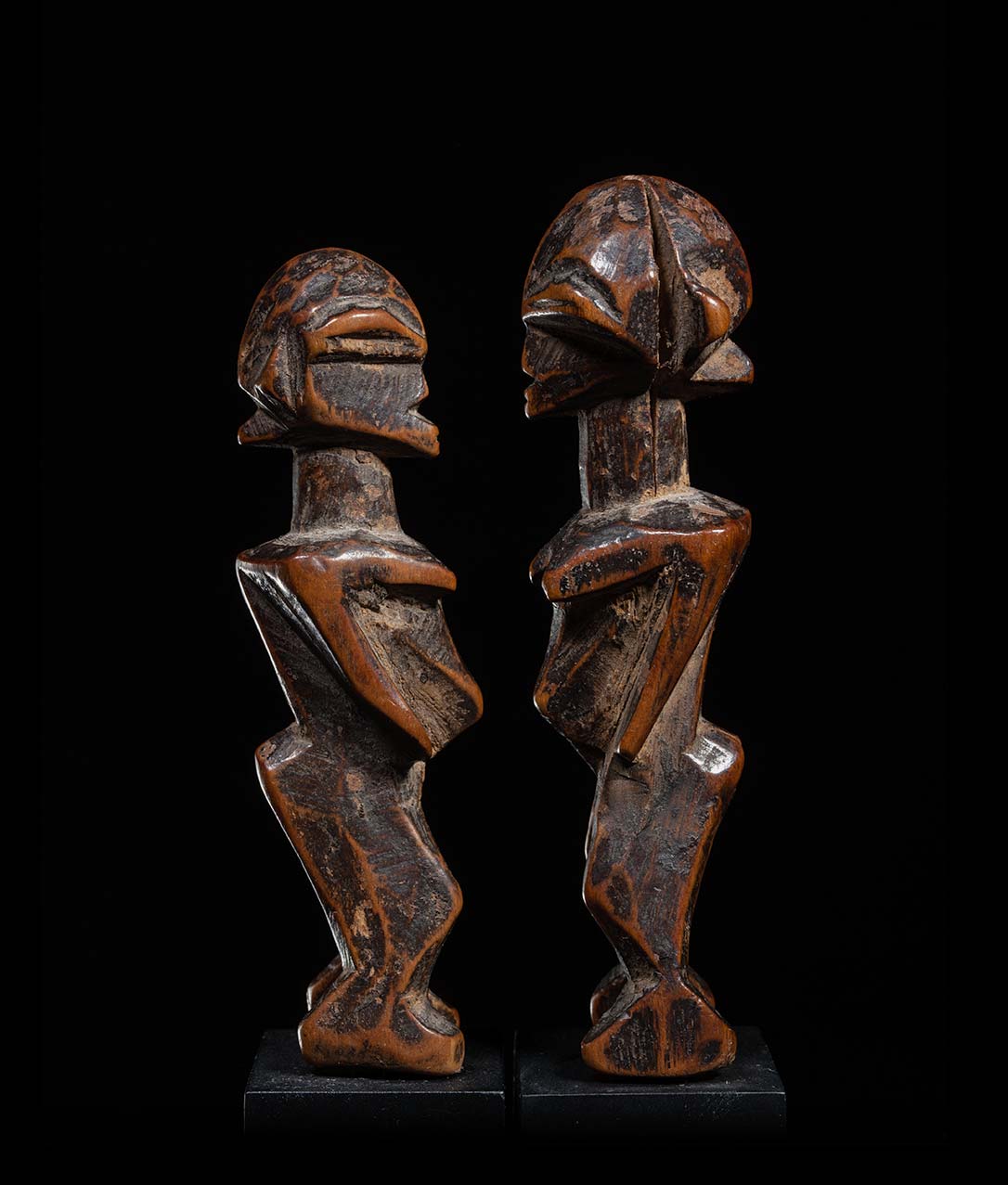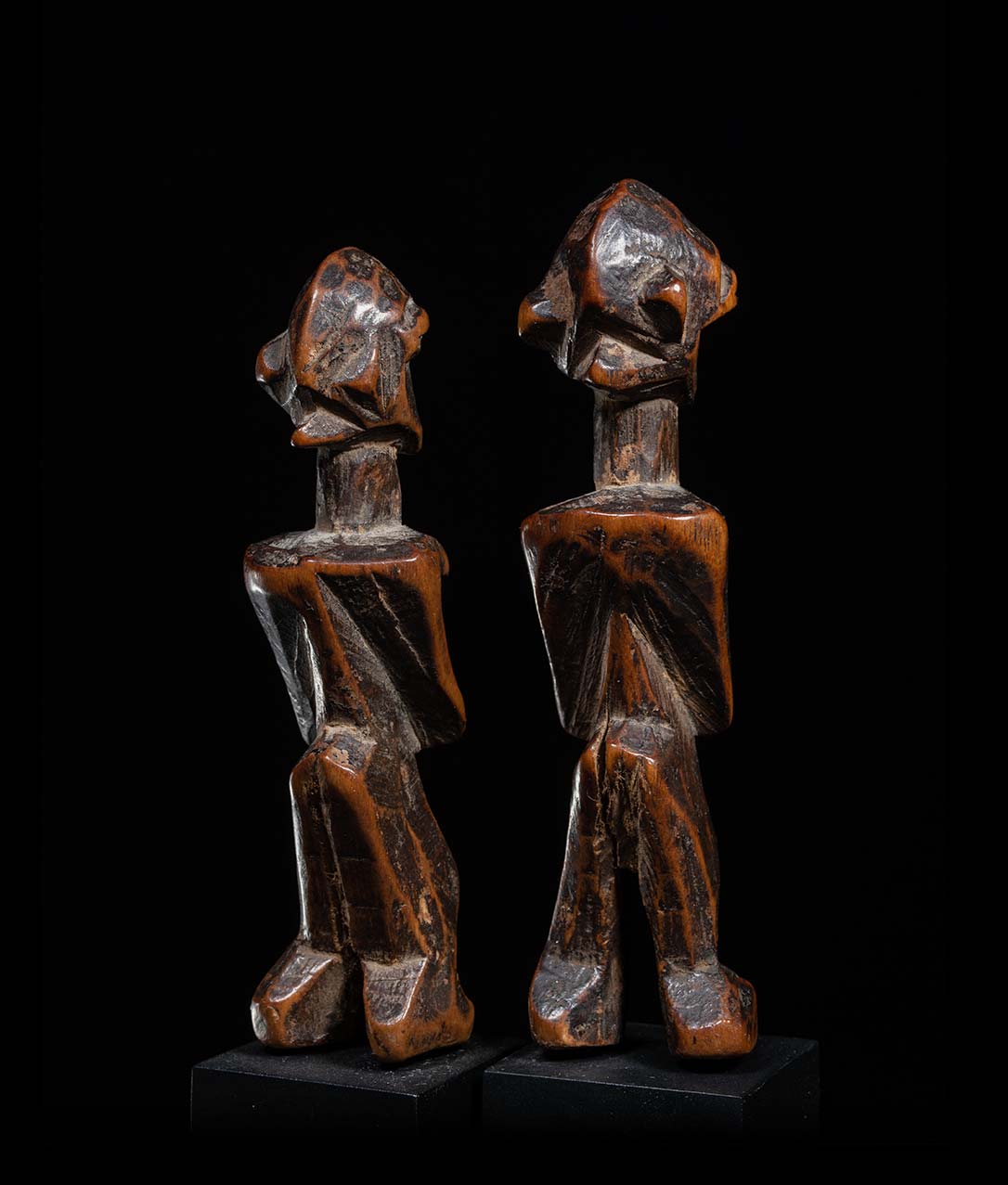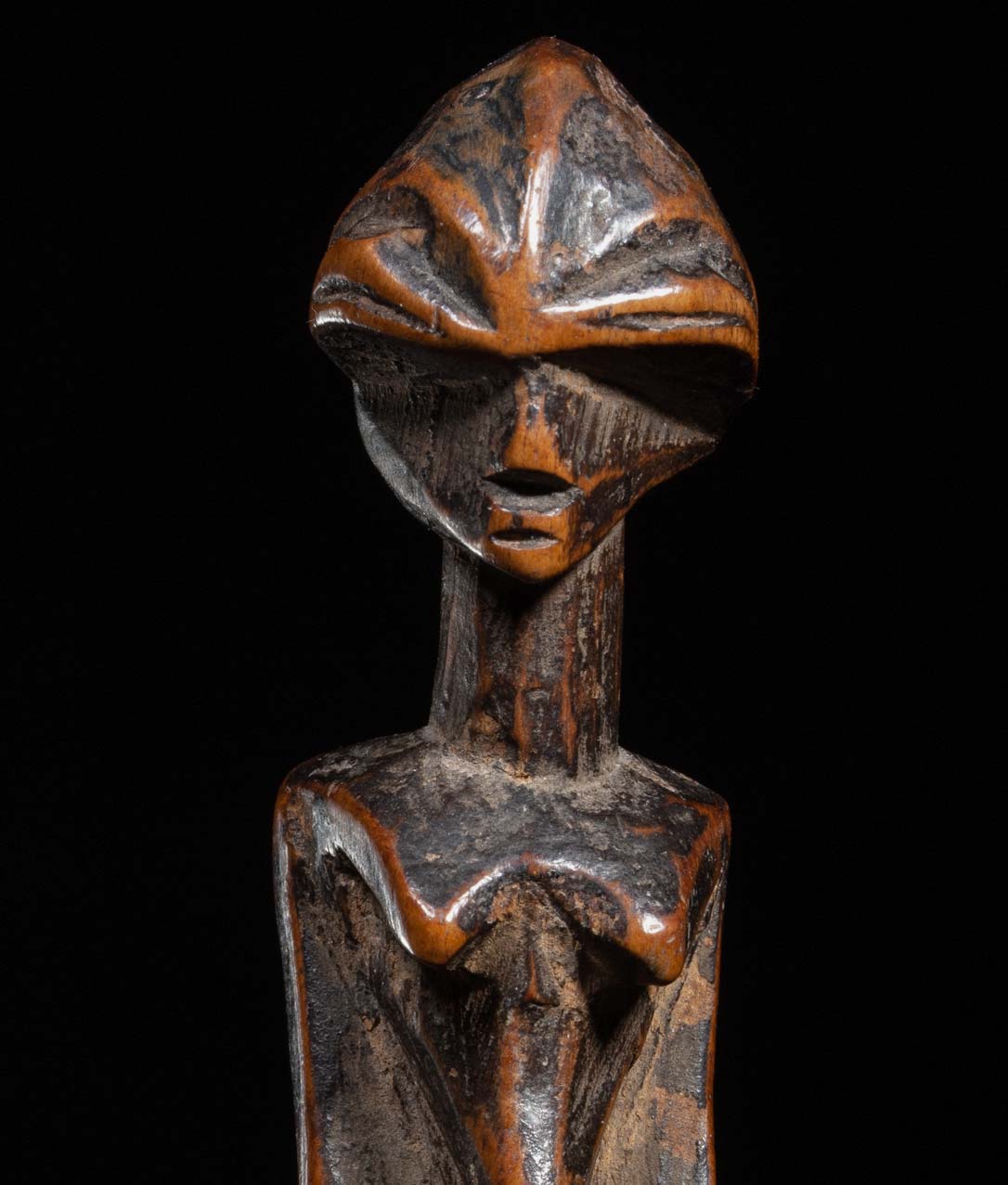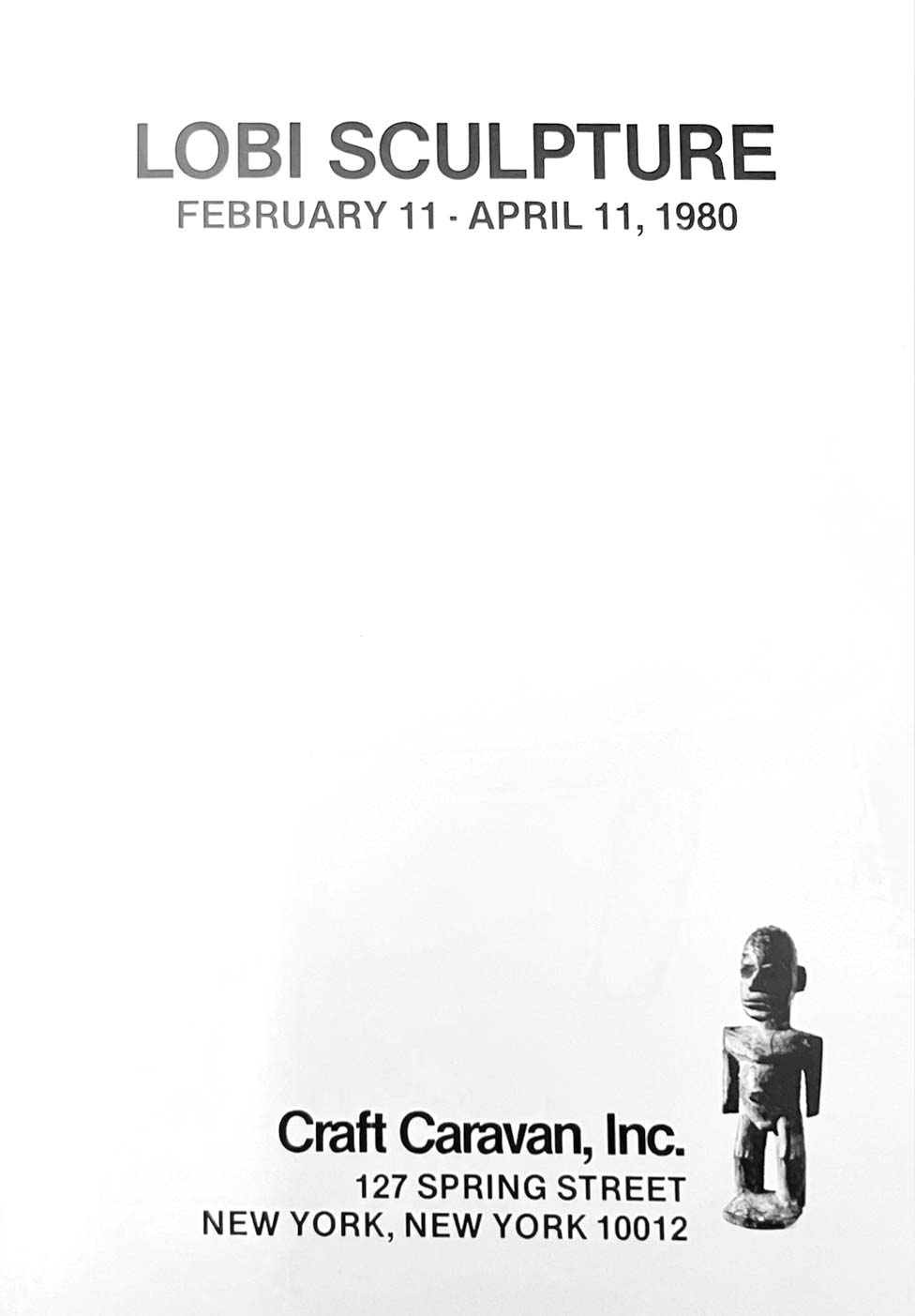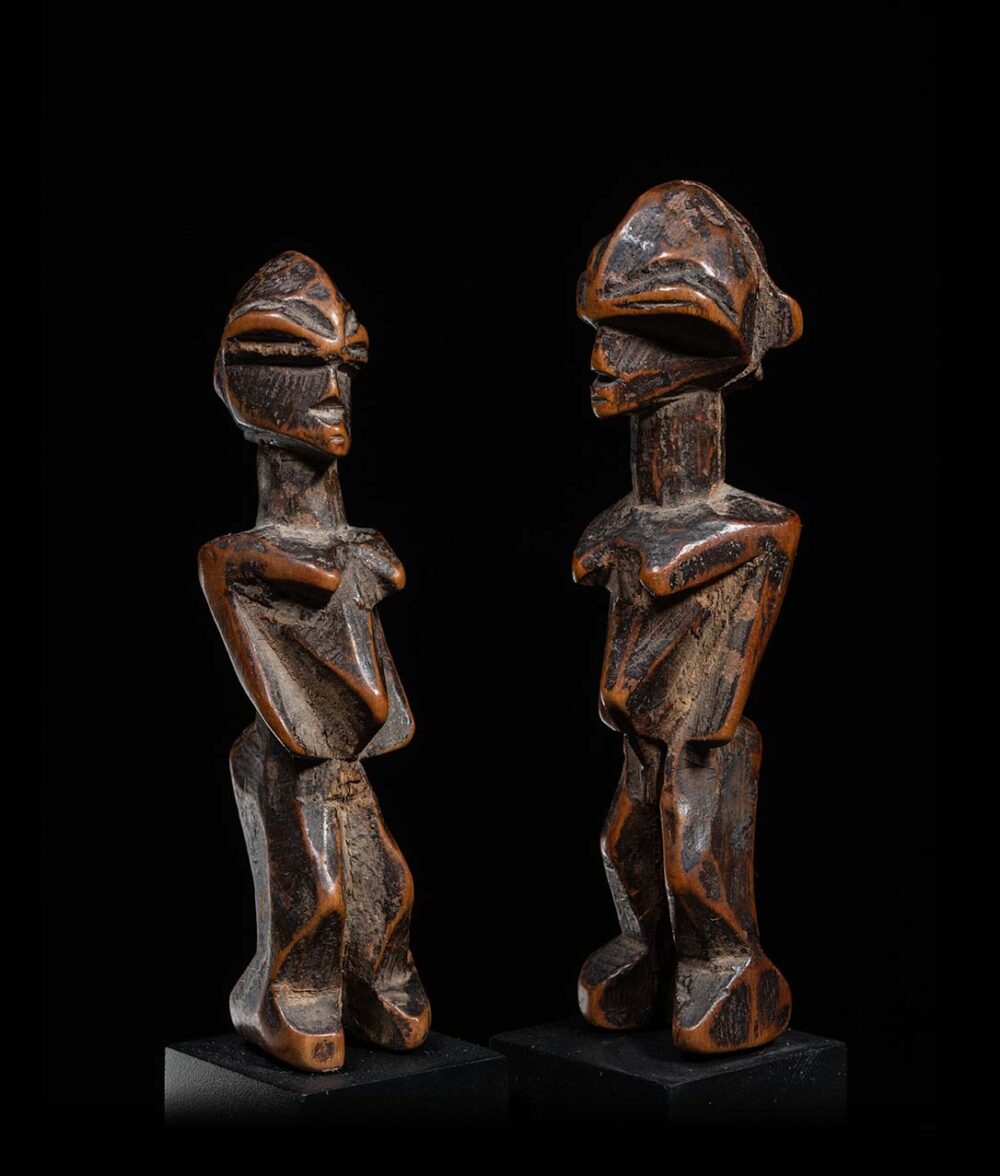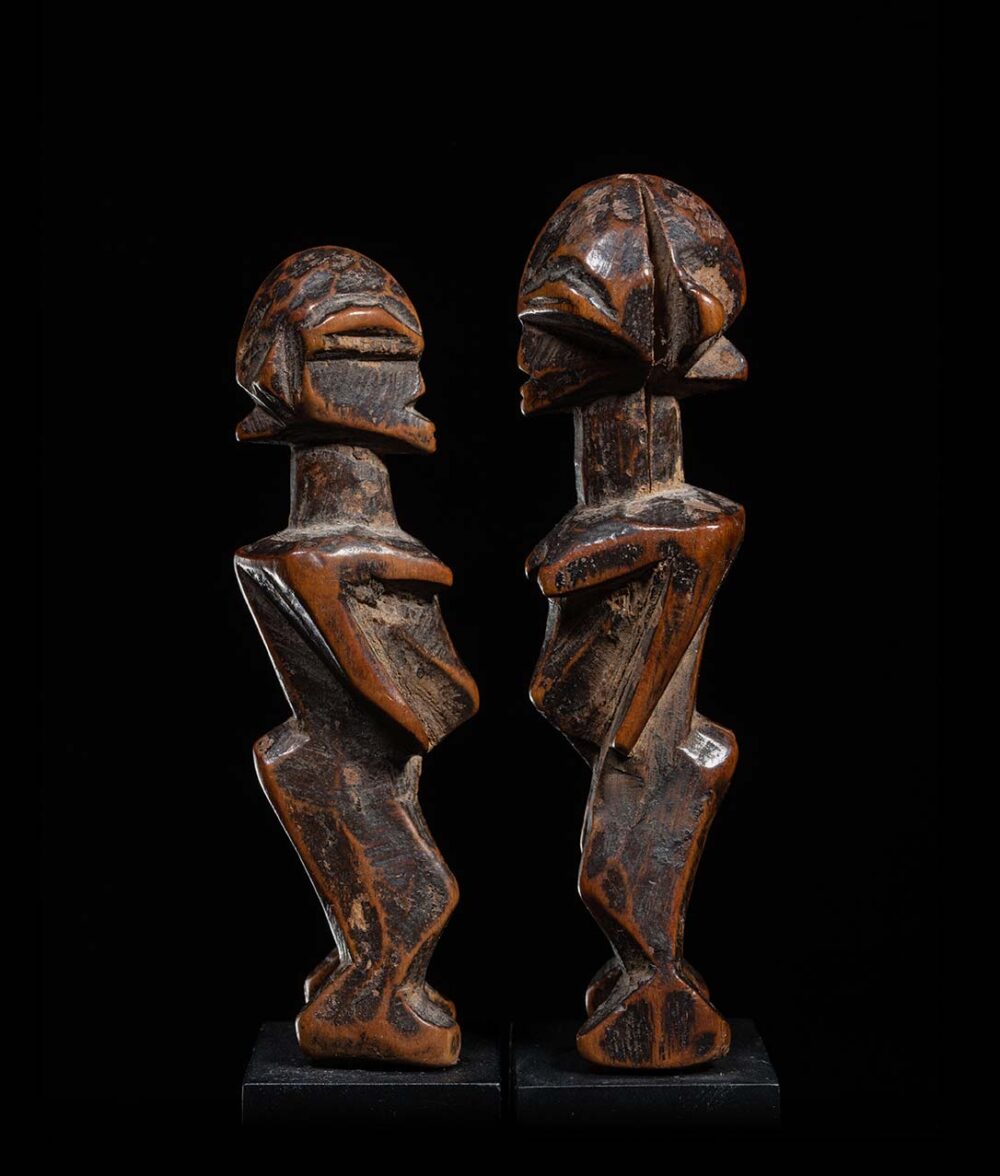A Pair of Standing Amulet Figures, kotee
Lobi, Burkina Faso
Early 20th c
Provenance: Joseph Knopfelmacher, founder of Craft Caravan, New York
Published: “Lobi Sculpture” February 11-April 11, 1980, Craft Caravan, figs. 33
Standing Protective Talismans, also known as kotee, are wooden figures carved by the Lobi people of Southwestern Burkina Faso. They are believed to have protective powers and are often placed at the entrance of houses, granaries, or carried on person. The Lobi people carve kotee in pairs because they believe that the figures have a male and female component, representing the complementary nature of the universe. The cubist style of carving used in kotee reflects the Lobi people’s emphasis on geometric forms and abstraction. They believe that by simplifying complex forms into basic shapes, they can better capture the essence of the object or idea they are representing. This style is also thought to make the figures more potent, as the abstract forms are believed to convey a sense of power and mystery. Additionally, the cubist style allows the Lobi carvers to represent multiple viewpoints of the figure simultaneously, which reinforces the idea of duality and balance in Lobi culture. Of note this pair also has stylized abstracted faces carved on the back of each head. The abstracted faces are believed to represent the spirit or soul of the figure. According to Lobi beliefs, the spirit or soul is in the back of the head, so carving the face on the back of the figure serves as a visual representation of the soul. In addition to representing the soul, the face on the back of the figure may also serve a protective function. The Lobi believe that evil spirits and malevolent forces can enter the body through the face, so by carving a face on the back of the figure, they are symbolically protecting it from harm.
A Pair of Standing Amulet Figures, kotee
Lobi, Burkina Faso
Early 20th c
Provenance: Joseph Knopfelmacher, founder of Craft Caravan, New York
Published: “Lobi Sculpture” February 11-April 11, 1980, Craft Caravan, figs. 33
Standing Protective Talismans, also known as kotee, are wooden figures carved by the Lobi people of Southwestern Burkina Faso. They are believed to have protective powers and are often placed at the entrance of houses, granaries, or carried on person. The Lobi people carve kotee in pairs because they believe that the figures have a male and female component, representing the complementary nature of the universe. The cubist style of carving used in kotee reflects the Lobi people’s emphasis on geometric forms and abstraction. They believe that by simplifying complex forms into basic shapes, they can better capture the essence of the object or idea they are representing. This style is also thought to make the figures more potent, as the abstract forms are believed to convey a sense of power and mystery. Additionally, the cubist style allows the Lobi carvers to represent multiple viewpoints of the figure simultaneously, which reinforces the idea of duality and balance in Lobi culture. Of note this pair also has stylized abstracted faces carved on the back of each head. The abstracted faces are believed to represent the spirit or soul of the figure. According to Lobi beliefs, the spirit or soul is in the back of the head, so carving the face on the back of the figure serves as a visual representation of the soul. In addition to representing the soul, the face on the back of the figure may also serve a protective function. The Lobi believe that evil spirits and malevolent forces can enter the body through the face, so by carving a face on the back of the figure, they are symbolically protecting it from harm.





